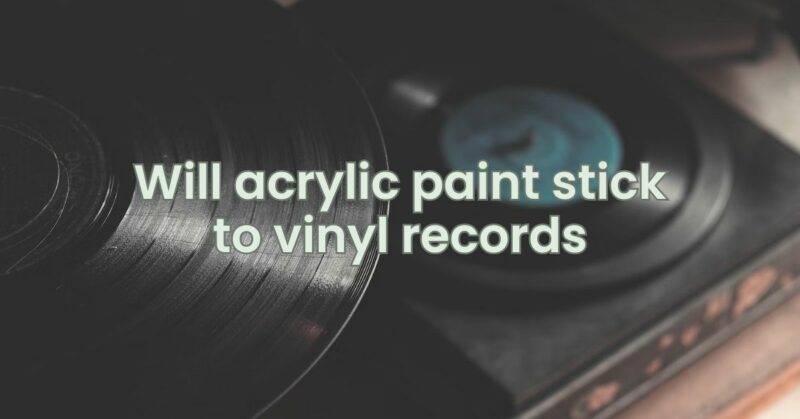Vinyl records have been captivating music enthusiasts for generations with their warm analog sound and nostalgic charm. In recent years, vinyl records have also become a creative canvas for artists and DIY enthusiasts. One common question that arises when it comes to vinyl art projects is whether acrylic paint will adhere to vinyl records effectively. In this article, we’ll explore the compatibility of acrylic paint with vinyl records, potential challenges, and best practices for successful vinyl art projects.
Understanding Acrylic Paint:
Acrylic paint is a popular choice among artists due to its versatility, fast drying time, and ability to adhere to various surfaces. It is water-based and consists of pigments suspended in an acrylic polymer emulsion. Once the paint dries, it forms a durable and flexible surface.
Compatibility of Acrylic Paint with Vinyl Records:
Acrylic paint can adhere to vinyl records to some extent, but it may not bond as effectively as it does on other porous surfaces like canvas or wood. Vinyl records have a smooth and non-porous surface, which can make it challenging for acrylic paint to adhere firmly.
Challenges of Painting on Vinyl Records:
- Adhesion: Acrylic paint may have difficulty adhering to the smooth surface of vinyl records, leading to issues like peeling or flaking over time.
- Flexibility: Vinyl records can flex and bend, especially when subjected to changes in temperature or humidity. Acrylic paint may crack or chip when exposed to this movement.
- Durability: The durability of acrylic paint on vinyl records can vary depending on the type of paint used, the preparation of the surface, and the conditions in which the record is displayed.
Best Practices for Painting on Vinyl Records:
If you plan to create vinyl art with acrylic paint, follow these best practices to enhance adhesion and overall longevity:
- Surface Preparation: Clean the vinyl record surface thoroughly with a mild detergent and water to remove any dirt or oils that might hinder paint adhesion. Rinse and dry the record completely before painting.
- Primer: Applying a thin coat of acrylic gesso primer to the vinyl record can improve paint adhesion. Gesso is designed to promote better paint adhesion on non-porous surfaces.
- Acrylic Paint Selection: Choose high-quality acrylic paint, preferably one that is labeled as suitable for use on non-porous surfaces. Some acrylic paints are formulated to adhere better to smooth surfaces like vinyl.
- Light Application: Apply the paint in thin and even layers rather than thick applications, as this can help reduce the risk of cracking or peeling.
- Allow for Drying Time: Give each layer of paint sufficient drying time before adding additional layers or details to ensure proper adhesion.
- Varnish: Once the artwork is complete and fully dried, consider applying a clear acrylic varnish to protect the paint and increase its longevity.
Display Considerations:
If you plan to display your painted vinyl record, keep the following in mind:
- Avoid direct sunlight and extreme temperature changes, as these can impact the artwork and the vinyl record’s structural integrity.
- Frame the painted vinyl record behind glass to protect it from dust, dirt, and accidental damage.
Conclusion:
Acrylic paint can be used on vinyl records for creative art projects, but it requires careful preparation and consideration of the surface’s smoothness and non-porous nature. By following the best practices mentioned above and selecting the right acrylic paint, you can create eye-catching vinyl art that showcases your creativity while preserving the record’s iconic charm. Remember that experimentation and testing different approaches can help you achieve the best results for your vinyl art endeavors.


